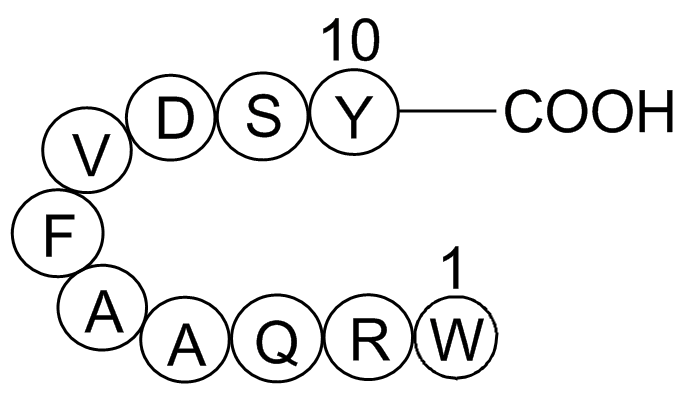10Panx (Synonyms: 10Panx) |
| カタログ番号GC13863 |
PANX1のペプチド阻害剤
Products are for research use only. Not for human use. We do not sell to patients.

Cas No.: 955091-53-9
Sample solution is provided at 25 µL, 10mM.
10Panx is a mimetic inhibitory peptide of panx1, which is a mammalian protein ectopically expressed to function as a hemi-channel, that readily and reversibly inhibits the panx1 currents. 10Panx has attracted increasing attention as it allows scientists readily and reliably to examine inhibition of panx1 in cells where efficient and consistent delivery of siRNA is highly difficult. According to results of multiple previous studies, 10Panx selectively inhibits P2X7R-induced dye uptake without altering other aspects of R2X7R activation and ATP-evoked membrane currents, constitutive dye-uptake and hemichannel-like currents that are induced by the overexpression of panx1, and ATP-mediated IL-1β release.
Reference
[1].Pablo Pelegrin and Annmarie Surprenant. Pannexin-1 mediates large pore formation and interleukin-1β release by the ATP-gated P2X7 receptor. The EMBO Journal (2006) 25, 5071-5082
Average Rating: 5 (Based on Reviews and 30 reference(s) in Google Scholar.)
GLPBIO products are for RESEARCH USE ONLY. Please make sure your review or question is research based.
Required fields are marked with *




















